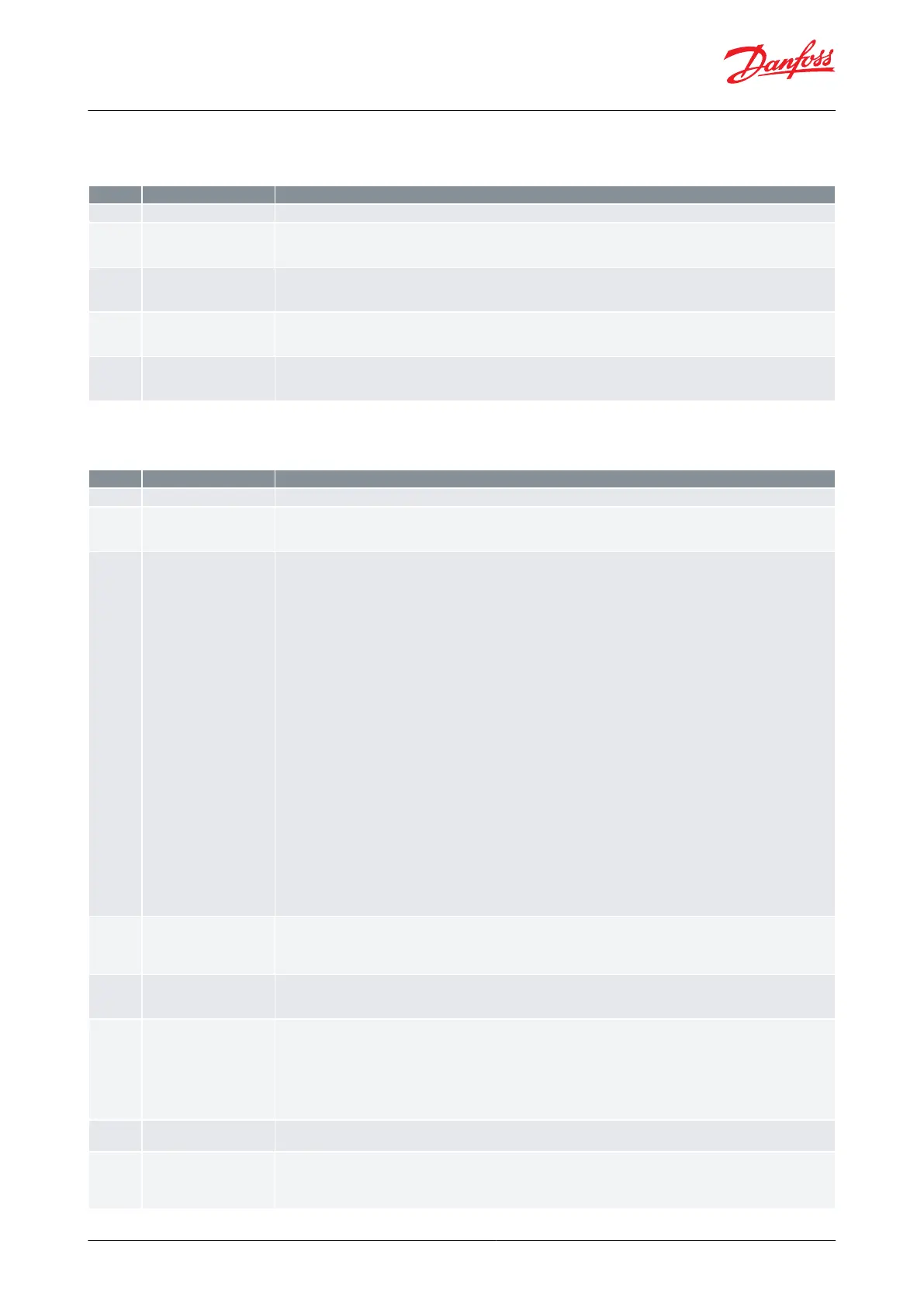Compressor
Table 17: Compressor
Compressor minimum ON time
This parameter determines the minimum number of minutes the compressor must run before a cut-out can take eect
based on temperature. This is to avoid sudden switching ON and OFF of the compressor.
Compressor minimum OFF time
This parameter determines the minimum number of minutes the compressor must switched OFF before a cut-in can take
eect based on temperature. This is to avoid sudden switching OFF and ON of the compressor.
Compressor OFF delay at door open
This parameter sets the delay in seconds before the compressor stops when the door is opened. If set to zero, the function
is disabled.
Zero crossing selection
This feature will increase the relay life time, reduce the contact welding and switching noise by switching ON at Zero cross-
ing. Disable zero crossing when external relay is used.
Miscellaneous
Table 18: Miscellaneous
Delay of outputs at power-up
After power-up the controller functions can be delayed by the time delay dened here so that overloading of the electricity
supply network is avoided.
DI1 conguration
Here you can congure the DI1 to one of the functions listed below.
• (0) oFF = not used
• (1) Sdc = status display output
• (2) doo = door function
When the door is opened the compressor and fan are stopped after “C04 Compressor door open delay”. If the door
alarm delay expires an alarm is generated and cooling is resumed.
• (3) doA = door alarm
When the door is opened the compressor and fan are stopped after “C04 Compressor door open delay”. If the door
alarm delay expires an alarm is generated (cooling is not resumed).
• (4) SCH = main switch
Regulation is carried out when the input is short-circuited, and regulation is stopped when the input is put in position
OFF.
•
(5) nig = day/night mode
When the input is short-circuited, there will be regulation for night operation.
•
(6) rFd = reference displacement
Value in “r40” is added to the reference “r00” when the input is short-circuited.
•
(7) EAL = external alarm
Alarm will be given when the input is short-circuited.
• (8) dEF = defrost
Defrost is initiated when the input is short-circuited. Edge triggering is used. Defrost exit can take place by time, tem-
perature or by manually pressing defrost push button on the front panel.
• (9) Pud = pull down
Pull down is initiated when the input is short-circuited. Edge triggering is used. It will come out of pull down based on
time and temperature dened under parameter “r96” and “r97” or can be stopped manually by pressing pull down
push button on front panel.
•
(10) Sc = condenser sensor
Network address for Modbus eldbus
Data communication is possible through external EKA 206 to RS-485 adapter.
The network address must be set in the range between 1 – 120 to be integrated on a Modbus eldbus.
Note: Network address must be set to 0, when connected to KoolProg through KoolKey.
Access code
If the settings in the controller are to be protected with an access code you can set a numerical value between 0 and 999. If
not, you can cancel the function with setting 0.
Sensor type selection
This parameter is for dening type of temperature sensors connected to the controller. All the mounted sensors (Sair, S5
and Sc) must be of same type.
• (0) n5 = NTC 5k (Danfoss type EKS211)
• (1) n10 = NTC 10k (Danfoss type EKS 221)
• (2) Pt = Pt1000 (Danfoss type AKS11, AKS12, AKS21)
• (3) Ptc = PTC 1000 (Danfoss type EKS 111)
Display resolution
This parameter denes the steps in which the temperature must be displayed by 0.1 or 0.5 or 1
Max. standby time after coordinated defrost
When a controller has completed a defrost it will wait for a signal which tells that the refrigeration may be resumed. If this
signal fails to appear for one reason or another, the controller will itself start the refrigeration when this standby time has
elapsed.
© Danfoss | Climate Solutions | 2023.05 BC432222569027en-000201 | 27
Case controller, type EKC 223 and EKC 224

